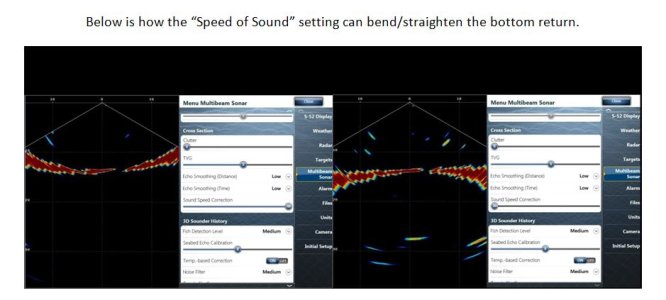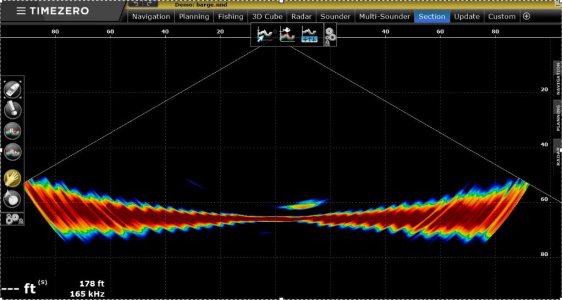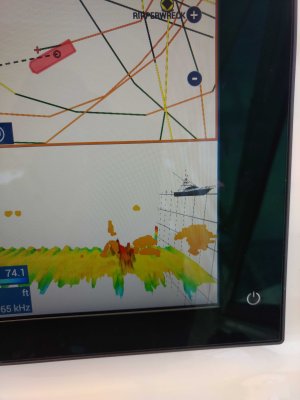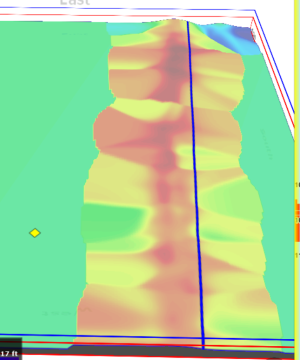jessembowen
New member
The port side of my DFF3d is dropping the edge of its scan down by as much as 3 to 5 feet.
I have tried adjusting the roll offset to correct this, but have not had any luck with the settings.
I have tried small number increments, and then tried stepping it all the way to 45 with no discernible change. I have also tried this for the "negative" side as well.
(I have tried 1, 3, 5, 10, 15, 45 and then negative)
I have noticed this converts to a degree when input.
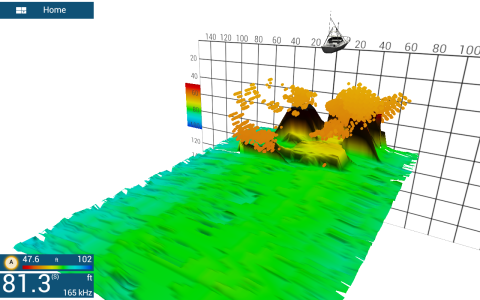
I currently run the following
TZ2
dff1-uhd (using tm265)
dff3d (165T-B54 thru hull)
sc30
Fi5002 (furuno nema junction)
hub
I record the scanned data using Nobeltec TimeZero Pro 3.
Previously I collected data only from the TM265, but can now record the DFF3d after the latest update/add-on.
However, the drop down is corrupting all of the scanned data, creating data points that are actually lower than possible, and when the low point crosses previously good data, it corrupts that as well.
I am ending up with area's that should be flat, but look like they are scooped out, or deep on one side.
I had the transducer professionally installed and hope that it is not an issue with the physical transducer. Any help on this would be appreciated.
Here I start a scan of an area (notice the 90/92 area in red box)
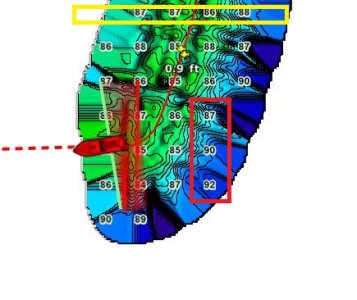
When I turn if you notice the deep area, in the 90's, this is from the drop down on one side.
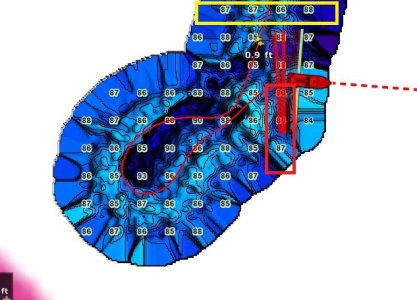
I have tried adjusting the roll offset to correct this, but have not had any luck with the settings.
I have tried small number increments, and then tried stepping it all the way to 45 with no discernible change. I have also tried this for the "negative" side as well.
(I have tried 1, 3, 5, 10, 15, 45 and then negative)
I have noticed this converts to a degree when input.

I currently run the following
TZ2
dff1-uhd (using tm265)
dff3d (165T-B54 thru hull)
sc30
Fi5002 (furuno nema junction)
hub
I record the scanned data using Nobeltec TimeZero Pro 3.
Previously I collected data only from the TM265, but can now record the DFF3d after the latest update/add-on.
However, the drop down is corrupting all of the scanned data, creating data points that are actually lower than possible, and when the low point crosses previously good data, it corrupts that as well.
I am ending up with area's that should be flat, but look like they are scooped out, or deep on one side.
I had the transducer professionally installed and hope that it is not an issue with the physical transducer. Any help on this would be appreciated.
Here I start a scan of an area (notice the 90/92 area in red box)

When I turn if you notice the deep area, in the 90's, this is from the drop down on one side.




